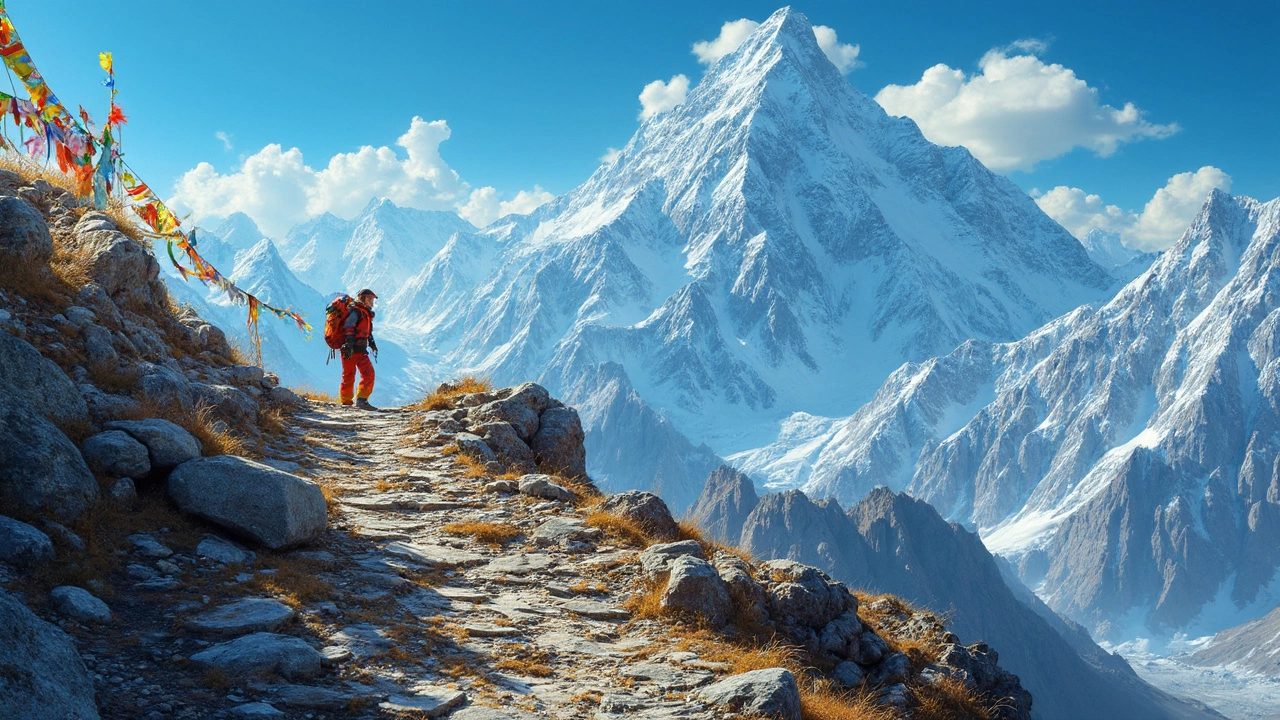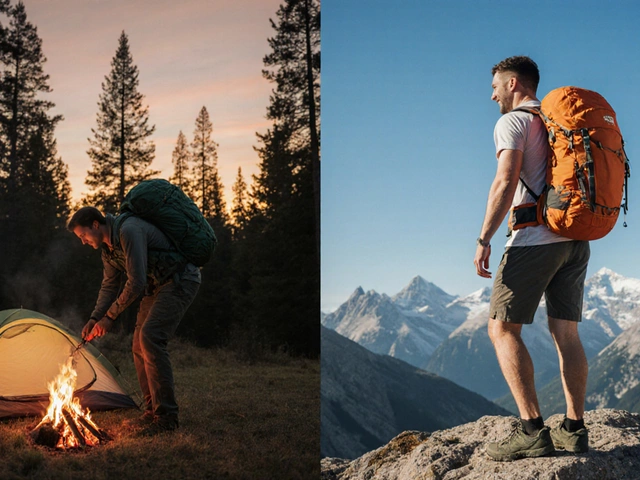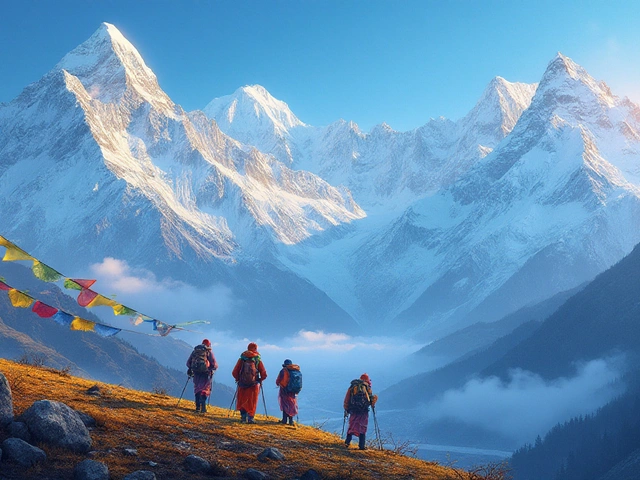When it comes to hiking, India's got it all. You can trek through the snow-capped Himalayas, explore the misty Western Ghats, or venture into the lesser-known trails of North-East India. Each region offers something unique, so whether you're an experienced hiker or just starting out, there's a trail for you. Fancy a challenge? The Himalayas will test your limits. Prefer a leisurely walk? The Western Ghats are full of gentler paths that wind through lush forests.
Before you hit the trails, it's smart to do a bit of prep. Get the right gear, check the weather, and be ready for anything. India has some incredible landscapes, but they're as unpredictable as they are beautiful. And don't forget about the cultural side of things. Many trails pass by villages where you can experience local customs and maybe even share a chai with a friendly villager. There's more to hiking in India than just the views, after all.
- Exploring the Himalayas
- Trekking in the Western Ghats
- Discovering North-East India
- Preparing for the Journey
- Cultural Highlights on the Trails
Exploring the Himalayas
The Himalayas, often referred to as the 'abode of snow,' are nothing short of a dream for trekking enthusiasts. With some of the world's most iconic mountains, trekking here is more than just an adventure; it's a spiritual journey. These majestic giants extend across northern India, offering a plethora of trails that cater to every kind of hiker.
Top Himalayan Treks
- Manali to Leh: This is a classic trek that's challenging but worth every step. It not only tests your physical stamina but rewards you with breathtaking views and a sense of achievement.
- Markha Valley: Located in Ladakh, this trek offers the chance to see a mix of arid landscapes and lush greenery. It's perfect for spotting wildlife, like the rare snow leopard if you're lucky.
- Kedarkantha Trek: Perfect for beginners, this route takes you through snow-covered trails. It's less crowded, offering serene vistas and a peak climb at 12,500 ft with panoramic views.
Practical Tips for Trekking in the Himalayas
Before you set off, ensure you're prepared. The weather can be unpredictable, so pack warm clothes even in summers. Altitude sickness is a common issue; acclimatize properly, and stay hydrated. Carry a basic first-aid kit and always check your gear before hitting the trails.
Trekkers should also be mindful of local customs and respect the cultural significance of certain regions. Many areas in the Himalayas have religious importance to the local communities. Being a responsible traveler goes a long way in preserving the beauty and harmony of these pristine landscapes.
When is the Best Time to Trek?
The ideal time for trekking largely depends on the specific region. However, late spring (May) and early autumn (September to November) are generally favorable, offering clear skies and moderate weather.
Whether you're looking to conquer high-altitude trails or enjoy scenic walks through valleys, the Himalayas have something for everyone. Just remember: the journey is as much internal as it is external. Happy trekking!
Trekking in the Western Ghats
The Western Ghats, also known as the Sahyadri Hills, are a paradise for those in love with lush greenery and biodiversity. Stretching over 1,600 kilometers, this mountain range runs parallel to India's western coast. It's dotted with numerous trails that offer trekkers beautiful vistas, diverse wildlife, and a plethora of flora and fauna.
Popular Trails
Some must-visit trails in the Western Ghats include the Kudremukh trek in Karnataka, which is known for its rolling green hills and misty weather. The Chembra Peak trek in Kerala is another favorite, offering a beautiful view from the top and a fascinating heart-shaped lake along the way.
For those seeking a mix of history and nature, the Rajmachi Fort trek near Mumbai is a great choice. This easy to moderate trek provides splendid views of the Konkan region and takes you to an ancient fort.
Unique Features
The biodiversity of the Western Ghats is unparalleled. It's a UNESCO World Heritage Site and one of the world's eight "hottest hotspots" of biodiversity. As you trek, you might spot animals like the Malabar giant squirrel or hear the distant trills of a Paradise Flycatcher. Plus, the Ghats harbor over 7,402 species of flowering plants.
Preparing for Western Ghats Trekking
Preparation is key to enjoying a trek here. The trails can be slippery, especially during the monsoon, so sturdy boots are a must. Pack light, but don't forget essentials like a raincoat, water bottle, and snacks. Many trails don't have extensive facilities, so be prepared to be self-sufficient.
Remember, the Western Ghats are known for their unpredictable weather. Always check the forecast before heading out, and if you’re a wildlife enthusiast, carry a pair of binoculars to make the most of the breathtaking biodiversity.
| Trail | State | Difficulty |
|---|---|---|
| Kudremukh | Karnataka | Moderate |
| Chembra Peak | Kerala | Easy to Moderate |
| Rajmachi Fort | Maharashtra | Easy |
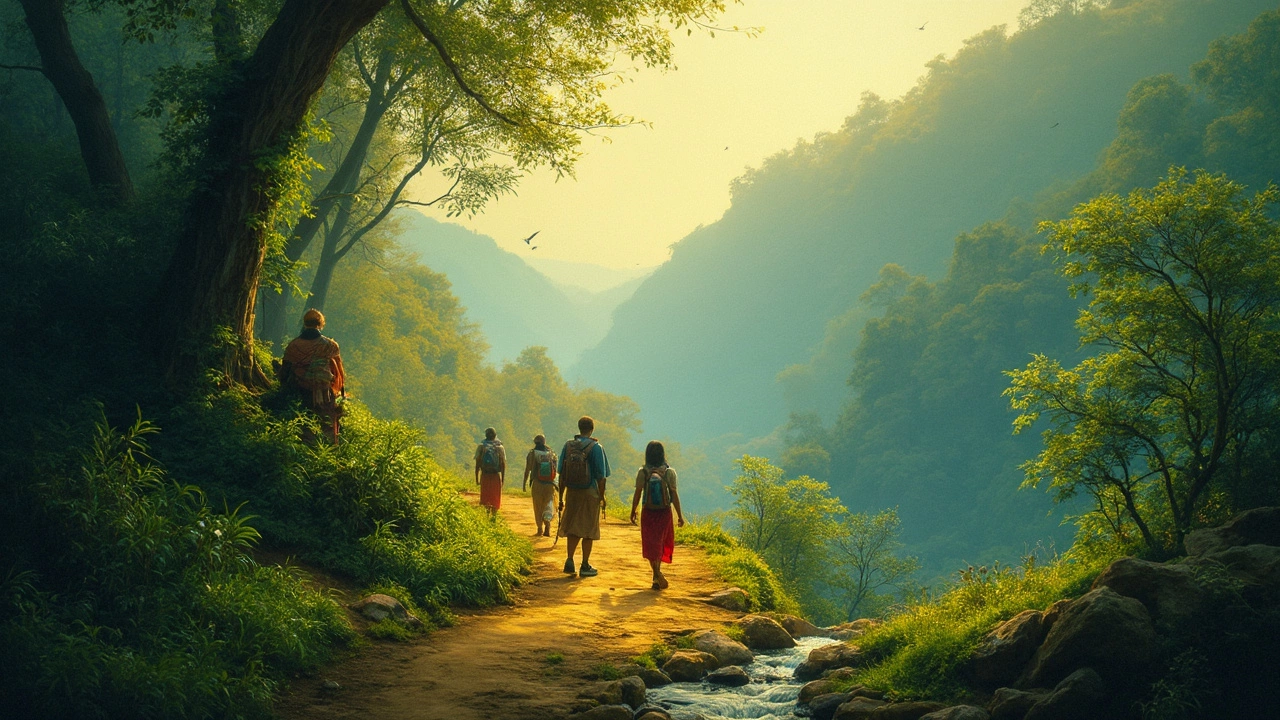
Discovering North-East India
North-East India is like a treasure trove for trekkers, offering some of the most stunning and unspoiled landscapes in the country. It's less crowded than other hiking spots, which means you can enjoy your adventure without the hustle and bustle. The region is home to rich biodiversity and unique cultures that make each trek an immersive experience.
Trekking in Arunachal Pradesh
Arunachal Pradesh, known as the "Land of the Dawn-Lit Mountains," is one of the lesser-explored spots for trekking in India. The Tawang and Bomdila treks are popular among adventurers. These trails take you through picturesque valleys and offer impressive views of the Himalayan peaks. Plus, they provide a chance to interact with indigenous tribes who call these mountains their home.
Exploring Meghalaya
If you're gearing up for a unique adventure, Meghalaya's living root bridges are a must-see. These natural wonders are crafted by the local Khasi tribe using the aerial roots of rubber trees. The David Scott Trail is another highlight in the region, a historic route that takes you back in time with its beautiful landscape and old-world charm.
Assam and Beyond
In Assam, apart from the famous tea gardens, the trails in Kaziranga and Manas offer a chance to spot wildlife in their natural habitats. Keep your eyes peeled for the iconic one-horned rhinoceros and other exotic species.
Practical Tips for North-East Treks
- Always check the weather and road conditions before heading out. The region can experience sudden changes that might alter your plans.
- Pack light but don't forget essentials like a good pair of boots, a first aid kit, and enough water.
- Hire a local guide if possible. Their knowledge of the trails and culture can enhance your experience significantly.
| State | Popular Trail |
|---|---|
| Arunachal Pradesh | Tawang, Bomdila |
| Meghalaya | David Scott Trail |
| Assam | Kaziranga Trails |
Venturing into North-East India can be unpredictable, but that's part of the adventure, right? The rewards of its pristine environments and welcoming communities make it well worth the effort.
Preparing for the Journey
Before starting your hiking adventure in India, a bit of prep work goes a long way. Start by checking the best season to visit the area you plan to hike. Timing it right can make all the difference. For example, the Himalayas are best in the summer months, while the Western Ghats can be comfortably hiked in the winter.
Packing the Essentials
A good backpack is clutch, but what you put in it matters even more. Bring along a sturdy pair of hiking boots, especially if you're tackling rugged terrain. Layered clothing is key since temperatures can swing drastically, especially in the mountains. Don't forget a waterproof jacket because, let's face it, some Indian regions are no strangers to sudden downpours.
- Water and Snacks: Keep hydrated and pack energy bars or snacks for quick fuel.
- Navigation: A map or a GPS device can keep you on track and feeling confident.
- First Aid Kit: A small kit with basic supplies is a must-have for any hiking trip.
Permits and Local Guides
Depending on your destination, you might need a permit to hike certain trails in India. Areas close to national borders, like some in the Himalayas, have stricter rules. It's wise to arrange these permits in advance to avoid any last-minute hiccups. And while many trails are straightforward, hiring a local guide can enhance your experience, offering insights you'd miss on your own.
Fitness and Health
India's diverse hiking terrains require varying levels of fitness. If you're eyeing a trek in Ladakh or near Annapurna, a bit of stamina training will do wonders. Acclimatization is crucial, especially in high-altitude areas, so plan some rest days to help your body adjust. While the hikes in the Western Ghats are usually less strenuous, maintaining a basic fitness routine will help you enjoy the trails more.
Whatever your hiking goal in India, a bit of planning ensures you not only have an epic adventure but a safe and comfortable one too. With the right gear, knowledge, and preparation, your trekking journey in India can be the experience of a lifetime.
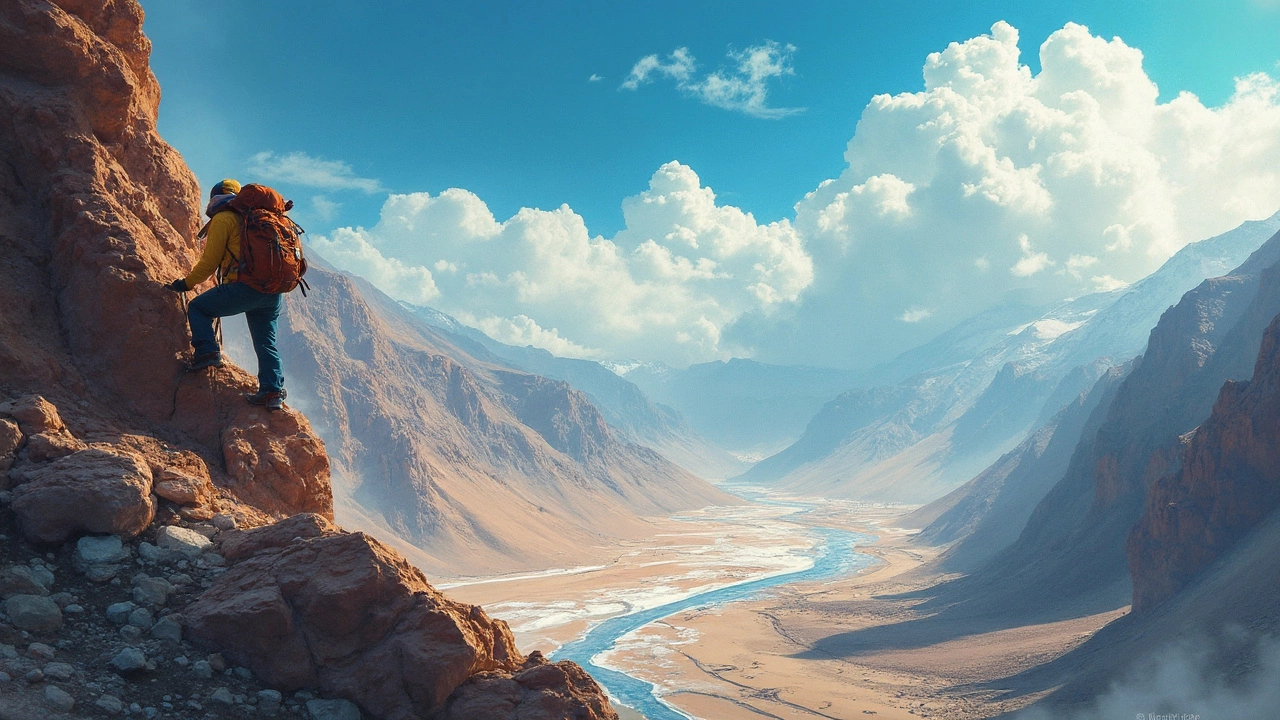
Cultural Highlights on the Trails
Hiking in India is not just about the natural beauty; it's a journey through vibrant cultures and traditions. Many trails intertwine with cultural experiences that offer more than just a scenic view. While you're trekking through the heart of the country, you have the chance to witness unique traditions and cultures firsthand.
Authentic Village Life
One of the most rewarding cultural highlights comes from visiting the remote villages nestled within the Himalayas. These villages offer a glimpse into life untouched by modernity. Imagine walking through a valley and coming across a hamlet where time seems to have stood still. The welcoming villagers often invite hikers to join them for a meal or tea. "Hospitality is not just an act, but a part of our culture," says Pema, a local from a village in Himachal Pradesh.
A journey is best measured in friends, rather than miles.
Festivals on the Trail
If your trek coincides with a local festival, you’re in for a treat. Trails in the North-East are especially known for their rich tapestry of festivals like Bihu or Hornbill. These events are alive with music, dance, and traditional games. Participating in a festival while hiking adds another layer of adventure.
Historical Sites
On some trails, you’ll encounter ancient monasteries or temples that are steeped in history. In the Western Ghats, for instance, there are beautiful fort ruins like those in the Sahyadri range, which tell tales of bygone eras. Exploring these historical sites can enrich your mental map of India's diverse past.
While on these trekking adventures, always respect local customs and traditions. A smile and a simple 'Namaste' go a long way in bridging cultural gaps. Understanding the cultural significance of the places you visit not only broadens your knowledge but also ensures a more responsible and respectful hiking experience.
